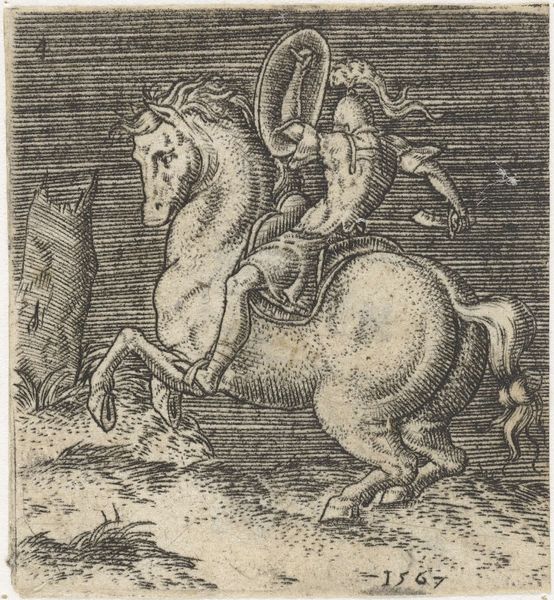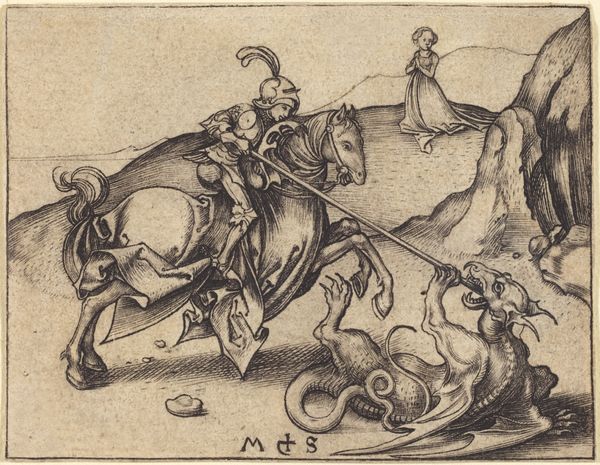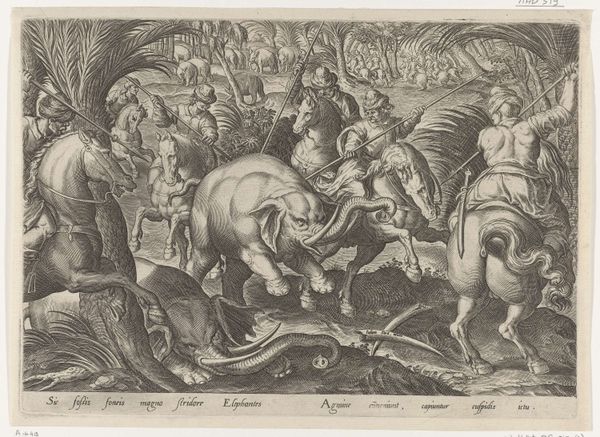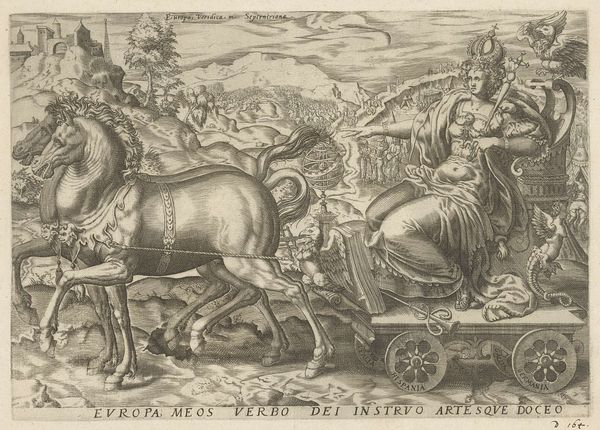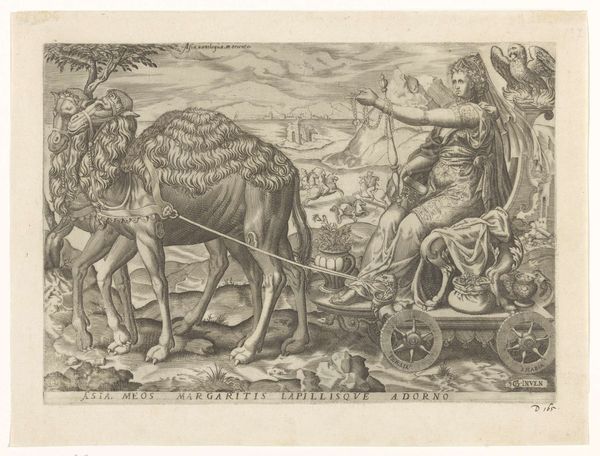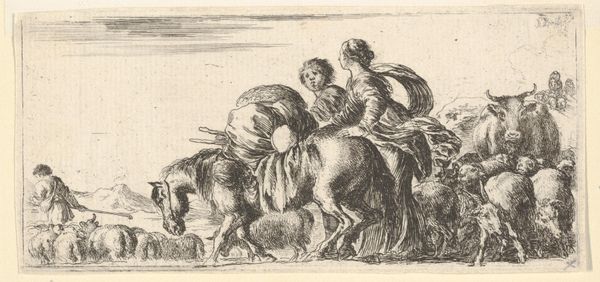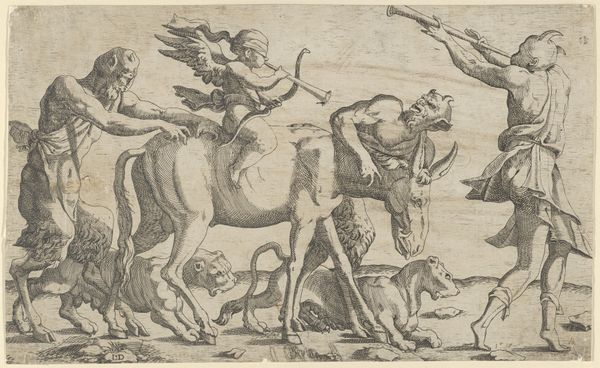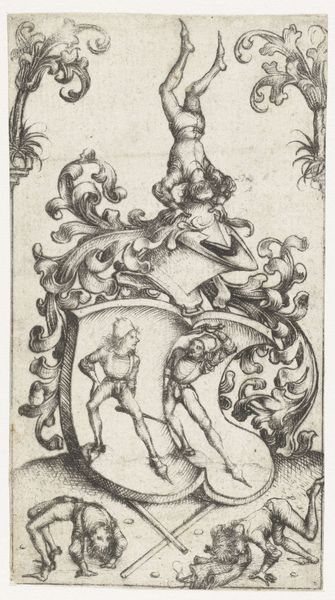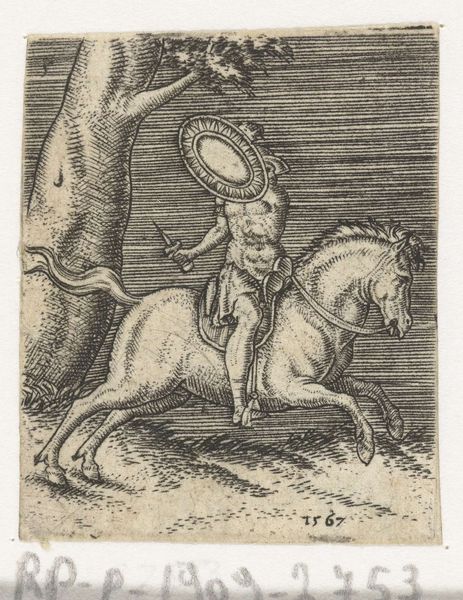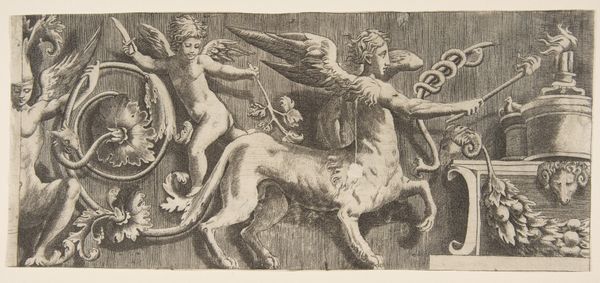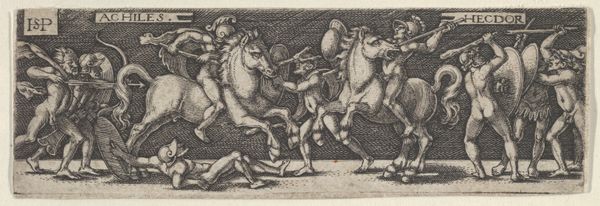
print, engraving
#
allegory
# print
#
caricature
#
old engraving style
#
mannerism
#
figuration
#
line
#
history-painting
#
nude
#
engraving
Dimensions: height 67 mm, width 222 mm
Copyright: Rijks Museum: Open Domain
Editor: Here we have "The Triumph of Bacchus" by Etienne Delaune, an engraving created sometime between 1528 and 1583. The frenetic energy of the figures is striking. How do you interpret the symbolism within this piece? Curator: This image reverberates with classical allusions, filtered through the lens of Mannerism. Note the procession – a visual trope evoking both Roman triumphs and bacchanalian revelry. Bacchus, of course, represents liberation, ecstasy, but also a release from societal constraints. Delaune isn't simply depicting a party; he's exploring a deeper psychological space. Do you notice the contrast between the ordered chariot and the wild abandon of the figures? Editor: I do. There’s a deliberate chaos surrounding the central figure of Bacchus that’s hard to ignore. What about the…almost caricatured expressions on some of the faces? Curator: Exactly! Those exaggerations are key. Caricature allows Delaune to explore the darker side of unchecked hedonism. The smiles are manic, the gestures frantic. It's not just celebration; it's a release that verges on self-destruction. This resonates with Mannerist concerns about the instability of appearances and the power of irrationality. Where does that snail fit into the narrative? Editor: I hadn’t even noticed the snail…That definitely throws a wrench into my understanding of a straightforward celebration of Bacchus. It is an odd inclusion, the snail… so out of sync. Curator: Precisely! The snail may be representative of laziness which goes against everything that’s associated to the God of wine himself and to those in the bacchanal scene. Considering the culture context this engraving belongs in, what purpose does the inclusion of that counter-symbol play? Editor: Thinking about the snail really opened my eyes to layers in the work beyond just a surface level depiction. I’m appreciating Delaune's commentary. Curator: Yes, by understanding how images function as carriers of cultural memory, we can grasp Delaune’s subtle critique of excess and the elusive nature of true triumph.
Comments
No comments
Be the first to comment and join the conversation on the ultimate creative platform.

